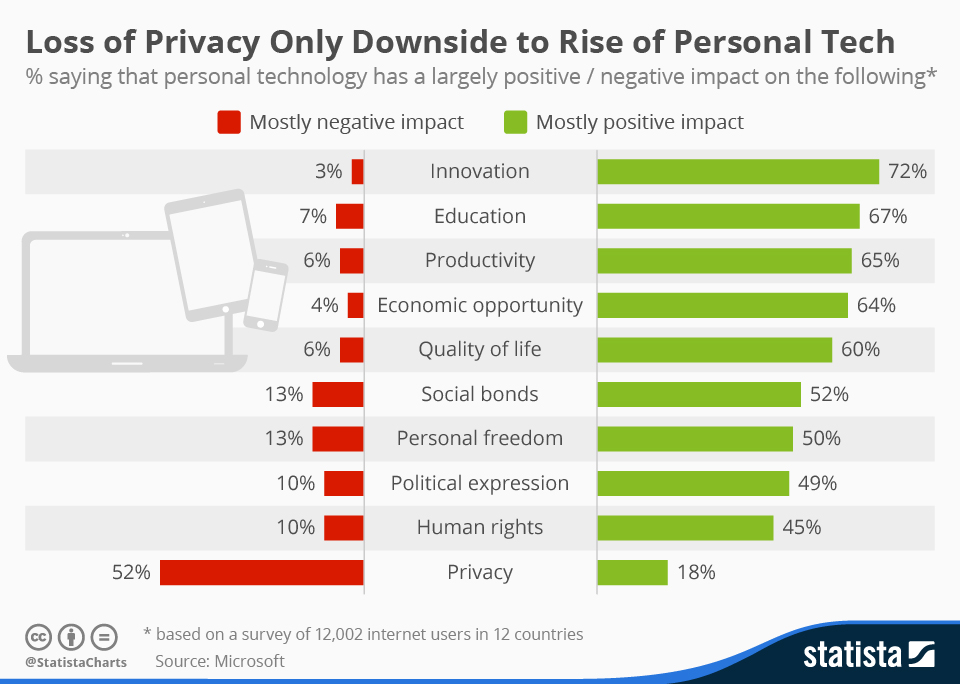
Imagine you’re walking into a shopping center for lunch when your phone buzzes. Expecting a text message from a friend you instead discover an extremely personalized advertisement, reminding you that your wife’s birthday is coming up and that she’s had her eye on a Coach purse that just happens to be on sale in a shop down the hallway. At this point you’re either amazed and pleased by the surprisingly helpful notification, or disturbed by what feels like a troubling invasion into your privacy.
Such is the emerging world of connected technology where personalization is the buzzword of the day. But not all personalization is considered equal and the approach is often fraught with increasingly perilous decisions by companies who know that a misstep can be disastrous. Social media is quick to punish any attempts that find themselves on the wrong side of the “innovative vs creepy” line and as a result most personalization has been kept largely in the background… serving analytical needs but usually not realized to the end consumer. However, this is now changing as the next frontier of customer experience is all about the nebulous goal of technology personalization.
There are a large number of statistics that show that the market is clamoring for more personalized technology in their lives:
- Businesses that are currently personalizing web experiences and who are also able to quantify the improvement are seeing an increase in sales of 19% on average. (Source: Econsultancy)
- 40% of consumers buy more from retailers who personalize the shopping experience across channels. (Source: mybuys.com)
- Nearly three-fourths (74%) of online consumers get frustrated with websites when content (e.g. offers, ads, promotions) appears that has nothing to do with their interests. (Source: 02 – The Rise of Me-tail)
- 94% of companies agree that personalisation “is critical to current and future success.” (Source: Econsultancy)
- 75% of consumers like it when brands personalize messaging and offers. (Source: Aberdeen Group)
So given what appears to be widespread support for personalized technology, you might find yourself wondering why more companies haven’t pushed forward with initiatives designed to connect more closely with their consumers. Certainly there are plenty of hurdles to get over when it comes to disconnected architectures, slow migration to the cloud and disparate IT teams that must be consolidated behind a unified vision before true personalization can occur. There are examples within email marketing where the personalization is done incorrectly –like with a spelling error in the name, or incorrect gender assignment– and has the opposite desired effect. But perhaps the most telling statistic that has stunted growth in personalized technology are increasing public concerns around privacy. Earlier this year Microsoft conducted a survey designed to test the impact of innovation on personal technology. Across the board in a wide range of social and economical issues respondents answered definitively that technology played a positive role in their lives… except in one area. Privacy.

The real problem with personalized technology is that while the benefits are unmistakable, it comes at a cost that is hard to ignore. Being reminded to purchase a gift for your spouse in the above example sounds like a great idea, until you think through the fact that your location, email, calendar and spending habits are being analyzed by a company who is trying to sell you something.
But the reality is that all of these things are being accessed and analyzed today. If you use a Google search engine you will quickly notice that advertisements on webpages match terms you searched for. If you post of Facebook you will find that it tries to market services to you that match your wall feed. Accessing personal data to provide a more relevant result is a win/win for consumers… until it crosses that ambiguous line into knowing more about you than you think it should. Once that moment happens there isn’t any coming back; plenty of data shows us that once a company loses the trust of keeping personal data private, it doesn’t recover in the eyes of its users.
This is the biggest reason that personalization has been such a complicated avenue for companies to explore. While younger generations have a much higher tolerance for sharing private information, they also have a much lower tolerance for technology behaving in ways it shouldn’t. This leads to a nearly impossible impasse to overcome, which is why most companies don’t bother. Even Disney, a company that has a fiercely loyal fan base was cautious about stepping over the personalization line in their technology revamp of Walt Disney World. For a company built extremely personal guest experiences and magical delights, to step back from the precipice of deeply personal connected technology is telling.
There isn’t one perfect solution to personalized technology and how it ultimately resonates with users will depend heavily on the context of the activity they are engaging in. People have shown a willingness to trade privacy for convenience, but within limits. A stored history of channels watched on TV is an appreciated feature until the user’s history collides with other users, who may find the history useless at best and troubling at worst (depending on the content). Scanning email for keywords and then serving up relevant advertising sounds great for marketers, but perhaps less so for users who may not want Google to have access to their conversations… or at least, not be reminded of it.
Like this:
Like Loading...
The Tricky Business of Personalized Technology
Imagine you’re walking into a shopping center for lunch when your phone buzzes. Expecting a text message from a friend you instead discover an extremely personalized advertisement, reminding you that your wife’s birthday is coming up and that she’s had her eye on a Coach purse that just happens to be on sale in a shop down the hallway. At this point you’re either amazed and pleased by the surprisingly helpful notification, or disturbed by what feels like a troubling invasion into your privacy.
Such is the emerging world of connected technology where personalization is the buzzword of the day. But not all personalization is considered equal and the approach is often fraught with increasingly perilous decisions by companies who know that a misstep can be disastrous. Social media is quick to punish any attempts that find themselves on the wrong side of the “innovative vs creepy” line and as a result most personalization has been kept largely in the background… serving analytical needs but usually not realized to the end consumer. However, this is now changing as the next frontier of customer experience is all about the nebulous goal of technology personalization.
There are a large number of statistics that show that the market is clamoring for more personalized technology in their lives:
So given what appears to be widespread support for personalized technology, you might find yourself wondering why more companies haven’t pushed forward with initiatives designed to connect more closely with their consumers. Certainly there are plenty of hurdles to get over when it comes to disconnected architectures, slow migration to the cloud and disparate IT teams that must be consolidated behind a unified vision before true personalization can occur. There are examples within email marketing where the personalization is done incorrectly –like with a spelling error in the name, or incorrect gender assignment– and has the opposite desired effect. But perhaps the most telling statistic that has stunted growth in personalized technology are increasing public concerns around privacy. Earlier this year Microsoft conducted a survey designed to test the impact of innovation on personal technology. Across the board in a wide range of social and economical issues respondents answered definitively that technology played a positive role in their lives… except in one area. Privacy.
The real problem with personalized technology is that while the benefits are unmistakable, it comes at a cost that is hard to ignore. Being reminded to purchase a gift for your spouse in the above example sounds like a great idea, until you think through the fact that your location, email, calendar and spending habits are being analyzed by a company who is trying to sell you something.
But the reality is that all of these things are being accessed and analyzed today. If you use a Google search engine you will quickly notice that advertisements on webpages match terms you searched for. If you post of Facebook you will find that it tries to market services to you that match your wall feed. Accessing personal data to provide a more relevant result is a win/win for consumers… until it crosses that ambiguous line into knowing more about you than you think it should. Once that moment happens there isn’t any coming back; plenty of data shows us that once a company loses the trust of keeping personal data private, it doesn’t recover in the eyes of its users.
This is the biggest reason that personalization has been such a complicated avenue for companies to explore. While younger generations have a much higher tolerance for sharing private information, they also have a much lower tolerance for technology behaving in ways it shouldn’t. This leads to a nearly impossible impasse to overcome, which is why most companies don’t bother. Even Disney, a company that has a fiercely loyal fan base was cautious about stepping over the personalization line in their technology revamp of Walt Disney World. For a company built extremely personal guest experiences and magical delights, to step back from the precipice of deeply personal connected technology is telling.
There isn’t one perfect solution to personalized technology and how it ultimately resonates with users will depend heavily on the context of the activity they are engaging in. People have shown a willingness to trade privacy for convenience, but within limits. A stored history of channels watched on TV is an appreciated feature until the user’s history collides with other users, who may find the history useless at best and troubling at worst (depending on the content). Scanning email for keywords and then serving up relevant advertising sounds great for marketers, but perhaps less so for users who may not want Google to have access to their conversations… or at least, not be reminded of it.
Like this:
Related Posts
The importance of Technology Innovation for Older Generations in Hospitality
Chasing the dream of True Collaboration
Appealing To Different Generations In Hospitality
The increasingly important need to win
About The Author
Travis
He has a twenty plus career in product creation, which includes writing and describing an endless series of bad decisions.